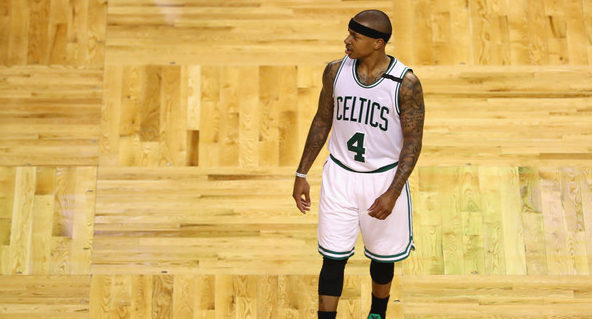There hasn’t been a more talked-about body part of late than Isaiah Thomas’ hips.
That’s because the trade that shipped Thomas, Jae Crowder, Ante Zizic, and the Brooklyn Nets’ 2018 first-round pick to the Cleveland Cavaliers in exchange for Kyrie Irving continues to be in limbo, no thanks to the Cavs not feeling happy about a previous physical exam done on Thomas.
At the center of it all is Thomas’ hip injury, which has made the Cavs worried of the guard’s readiness to play right from the start of the upcoming season. Thomas picked up the injury last March then hurt his hip again during the Eastern Conference semifinals showdown against the Washington Wizards. While he managed to finish the series, he wasn’t able to do it in the Eastern Conference Finals against the Cavs, as he was forced to miss three games after re-aggravating it in Game 2. Per NBA.com, the injury is called a “re-aggravation of a right femoral-acetabular impingement with labral tear.”
That sounds scary, but not scary enough for Thomas to consider surgery this offseason. But if he does indeed elect to undergo hip arthroscopy, he should also know that a US National Library of Medicine study doesn’t sound too confident on athletes being back to their sport 100 percent after the said procedure.
In general, for properly selected cases, hip arthroscopy has a high rate of improvement, but does not always assure returning to the rigors of athletic activities. Among a heterogenous group of athletes, 93 percent were improved, but only 76 percent returned to their sport symptom-free and unrestricted or at an increased level of performance. Eighteen percent either chose to not return or were unable to return to their primary sport. Among a group of elite athletes, 96 percent were improved, but only 85 percent were able to successfully return to their sport.
Meanwhile, according to a sports medicine doctor in Boston, Thomas has a few options at his disposal before resorting to surgery.
The best-case scenario for Isaiah Thomas is that he responds to rest from basketball, more physical therapy, and possibly one steroid injection. If he has already exhausted these options or if his medical team decides that he needs a more aggressive approach, then hip surgery would be the next step. Recovery from surgery could be anywhere from 6-9 months, depending on what is done and how he responds.
That recovery time almost spans an entire NBA season, which makes it understandable why the Cavs are having qualms about the trade. Time is running out for them to make a final decision, however, as the deadline for Cleveland to categorically seal the deal is fast approaching.
